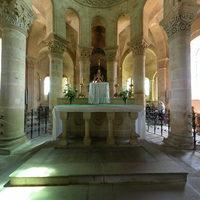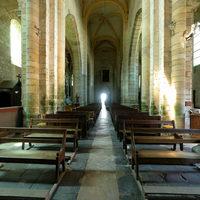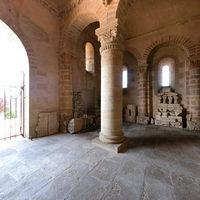Overview
The church of a former Benedictine abbey for women founded at the end of the 10th century in the town of Malliacum after the discovery of the relics of Breton bishop Saint Menoux or Menulphe who was said to have conducted a saintly life here in the seventh century. The monastery prospered thanks to a pilgrimage cult and the support of the powerful seigneurs of Bourbon, based in the adjacent town of Bourbon 'Archambault. In 1125 Archambault VII conceded to the monastery rights over the bourg that had grown up--similar to the rights enjoyed by the monks of Souvigny. Bourbon generosity continued into the thirteenth century and a succession of aristocratic women presided over the monastery. The church has an early three-bay narthex--perhaps originally from the late tenth century, though much rebuilt. The outer walls of the nave are of petit appareil and on the north flank is an unarticulated portal (now suppressed) with a triangular lintel suggesting an early date. The westernmost bay of the north aisle has a round-topped window The north aisle of the nave has a longitudinal barrel vault with transverse arches received on rectangular pilasters attached to the outer wall. On the south side of the nave the 12th-century clerestory wall is still visible. However the three-bay nave was entirely reworked in the fifteenth century when the main vessel and south aisle received rib vaults. The square central crossing bay supporting a magnificent central tower belong to the thirteenth century. The most remarkable part of the church is the choir with its ambulatory and raditating chapels (axial chapel is rectangular), built towards the middle of the twelfth century. The sumptuous sculptural forms show dependence upon book illumination both the Greek key motif that articulates the base of the clerestory and the capitals with their rinceaux. It is common to cite a "Burgundian" background for the fluted pilasters and egg and date decoration



